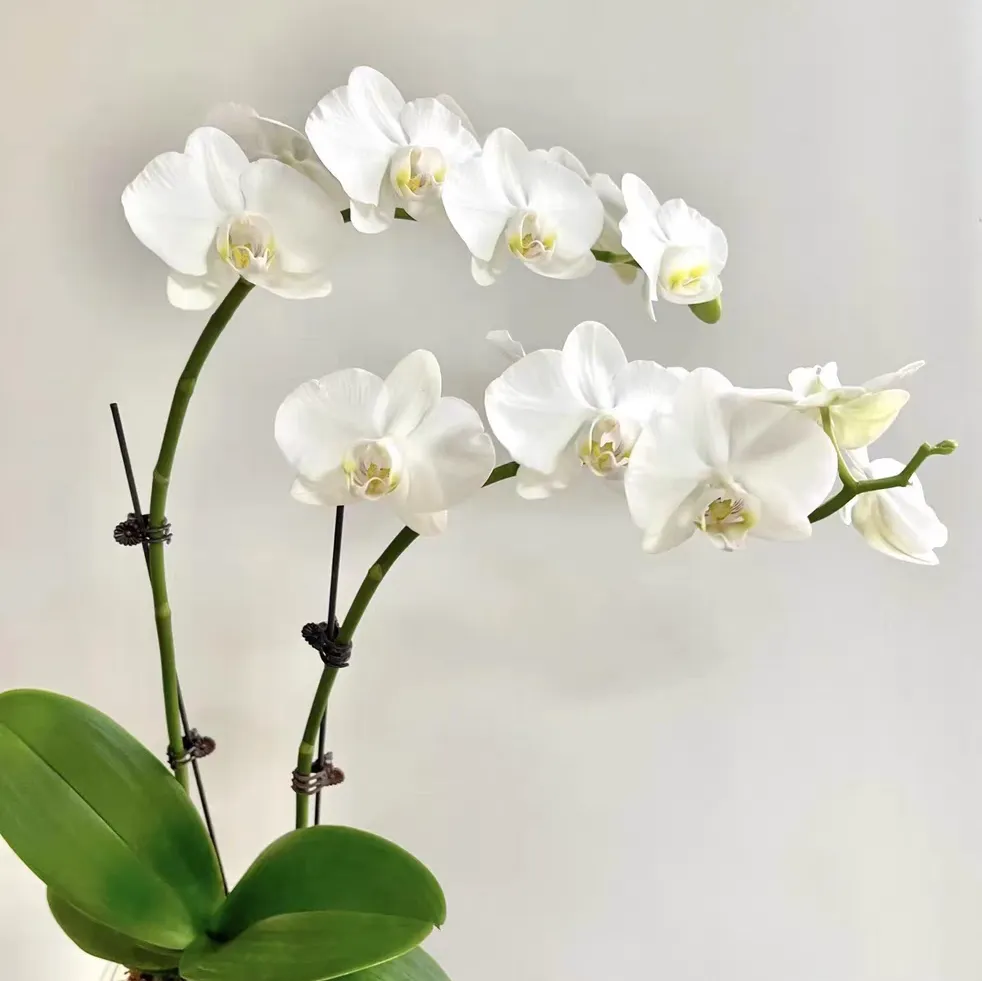Phalaenopsis is deeply loved by flower enthusiasts for its elegant flower posture. However, the phenomenon of leaf reddening often occurs during the maintenance process, which is mainly caused by multiple factors such as light, water, temperature, nutrition, and diseases.
### **Light**
When Phalaenopsis is exposed to excessive light, the leaves show obvious physiological reactions. New leaves are prone to purplish-red patches or local red spots, accompanied by slight dry wrinkles on the leaf surface. This is because excessive ultraviolet rays damage the chlorophyll structure in the leaves, causing anthocyanins to appear and the leaves to change color.
#### **Solutions:**
1. **Light adjustment:** Immediately move the plant to a diffused light environment to avoid direct sunlight. Choose a location 1-2 meters away from the window indoors to ensure sufficient light while avoiding direct damage.
2. **Summer protection:** During high-temperature and strong-light periods in summer, use a sunshade net with a 60% shading rate to create a suitable lighting environment for the plant.
3. **Gradual adaptation:** When changing the light environment, adjust it step by step and give the plant a 3-5 day adaptation period to prevent growth disorders caused by sudden environmental changes.
### **Watering**
- **Excessive watering:** Overwatering keeps the substrate in a highly humid state for a long time, hindering root respiration, which in turn causes root rot and leaf reddening. At this time, the substrate such as sphagnum moss feels wet and sticky, and blackened, rotten roots can be seen when拨开 (拨开: parted).
#### **Solutions:**
1. **Control water and replace the planting medium:** Stop watering immediately and wait until the substrate is completely dry before the next watering. Meanwhile, replace it with a well-ventilated planting medium, and a mixed substrate of sphagnum moss and bark is recommended to improve drainage and air permeability.
2. **Root treatment:** If the roots are severely rotten, remove the plant from the pot, trim the rotten roots, soak them in carbendazim solution for disinfection, and repot.
- **Improper watering method:** Watering directly into the leaf center easily causes water accumulation in the leaf center. In a high-temperature and high-humidity environment, it provides a hotbed for the growth of bacteria and fungi, leading to heart rot disease, manifested as reddening and rotting in the leaf center.
#### **Solutions:**
1. **Water along the pot edge:** When watering, slowly pour water along the edge of the flower pot to avoid water entering the leaf center.
2. **Timely drainage:** If water accidentally enters the leaf center, immediately absorb the accumulated water with a highly absorbent tissue or use a fan to dry it at a low speed.
### **Temperature**
- **Low-temperature freezing damage:** The suitable growth temperature for Phalaenopsis is 16-30°C. When the environmental temperature is lower than 10°C, the plant's metabolic function is disordered, and the leaves will turn red. In severe cases, it will also cause the leaves to become soft and frostbitten.
#### **Solutions:**
1. **Temperature control:** In winter, place the plant in a warm environment and keep the room temperature stable within the suitable range. During cold waves, use an insulation film or plastic bag (with ventilation holes) to wrap the flower pot for warmth.
2. **Stay away from cold sources:** Avoid placing the plant near windows, air conditioning vents, or other positions with large temperature fluctuations.
### **Nutrition**
- **Potassium deficiency:** Potassium plays a key role in plant photosynthesis and stress resistance. When Phalaenopsis is short of potassium, the edges of old leaves will first turn red and gradually expand to the middle of the leaves.
#### **Solutions:**
1. **Foliar spraying:** Dilute potassium dihydrogen phosphate 2000 times (i.e., 1 gram of fertilizer mixed with 2 liters of water) and spray it on the leaves once a week to promote rapid absorption by the plant.
2. **Long-acting fertilization:** Use slow-release fertilizers in combination to slowly release nutrients and provide continuous nutritional support for the plant.
What are the reasons for the redness of Phalaenopsis leaves?

Share with
Tagged in :




Leave a Reply